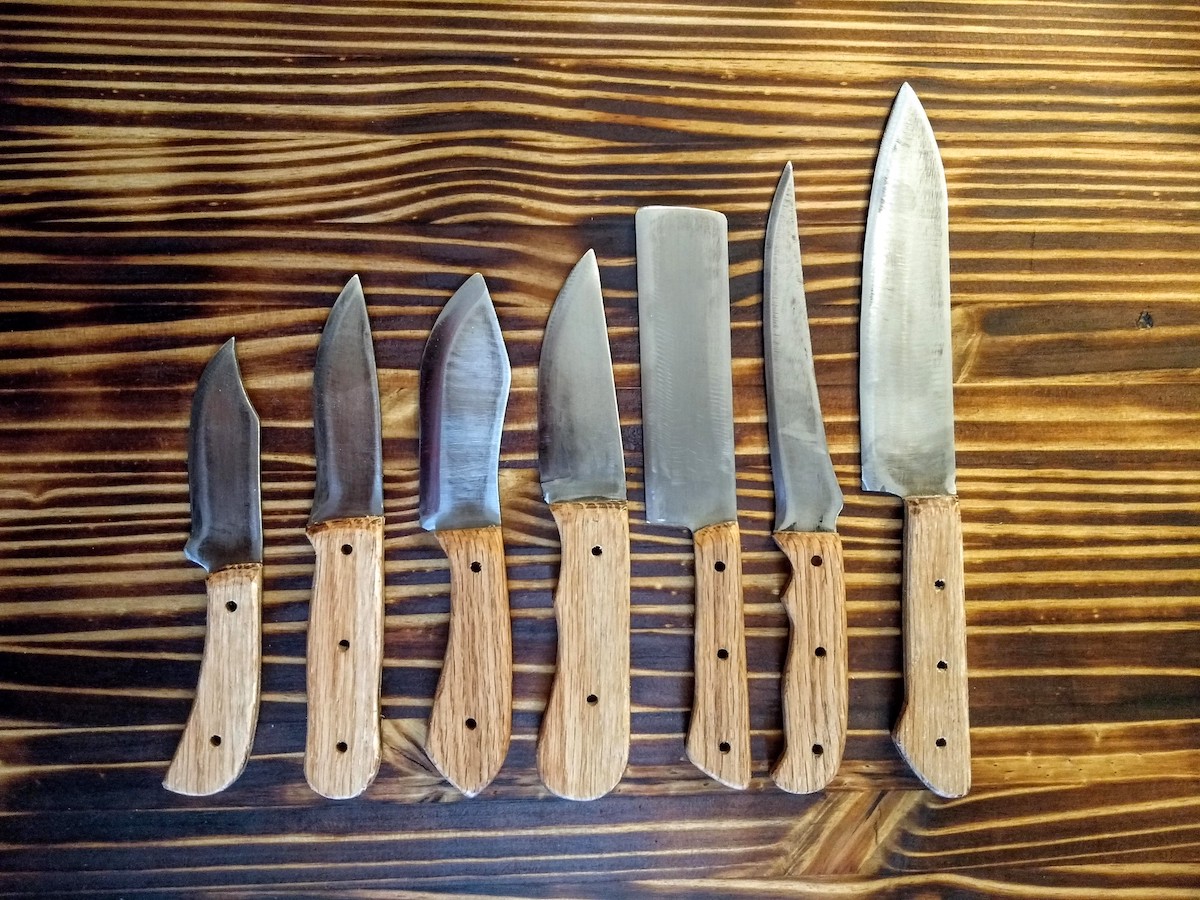An Introduction to Knife Steels and Carbon Content

A good question: Why don’t we just use the highest carbon steel possible?
Looking back at our list of three qualities, the first one is that the steel is easy to work with.
When you go above a certain carbon percentage, things get harder to manipulate and get good results.
To fit our criteria for “easy to work with” we will stay in the High-carbon range.
A steel that fits the bill and isn’t very expensive is 1084 carbon steel.
It has a carbon content ranging from 0.80 – 0.93%.
Why use 1084 carbon steel?
1084 is a commonly used steel for knife making beginners and professionals alike due to its ease of use, solid carbon content, and reasonable pricing.
You can use other materials to make knives, though. Here is a short list of common DIY materials for knife making:
- Vehicle leaf springs – These are typically made out of 4140. This metal is very hard, but it finishes up nicely.
- Saw blades – These will vary depending on their age and manufacturer. I’ve made some nice knives out of crosscut saw blades that I still use today.
- Metal sharpening files/mill bastards – Hand files are good carbon steel that has been heat treated to perform properly. For example, in order to sharpen a hard material like steel, these files have to be hardened carbon steel.
These are just a few options that you might have available to you.
With each of these examples, you will need to anneal the leaf spring, saw blade, or hand file before grinding and shaping.
This will make the metal “softer” and more workable saving you time and tool wear and tear.
Let’s stick with 1084 for now…
For this course, we will focus on using professionally milled and finished 1095 carbon steel bars.
That way we will have a nice, consistent grain structure and metal content. We can then be reasonably sure that things are as they should be. No surprises.
Next, let’s look at where to get our pieces of 1084.
Where to Find Knife Steels
Where to buy 1084 carbon steel:
1084 is not a steel grade that you can pick up at Lowe’s, Home Depot, or Tractor Supply.
Since it has been manufactured to specific parameters, it becomes a specialty steel.
For 1084 steel bars, I buy from long-standing, reputable metal and blacksmithing suppliers.
This helps me avoid high prices and mystery metal.
Here are two businesses I like to use for buying 1084.
Online Metals
Online Metals is a large website dedicated to all things metal.
You can purchase cut lengths of 1084 here
On the home page, make these selections:
- Choose Carbon Steel under “Select Material”
- Choose Bar-Rectangle under “Select Shape”
- Choose 1084 under “Select Alloy”
From there you can select the length you want (think about the number of knives you can get out of a single piece of steel) and they will show you which length gives you the best shipping cost.
What makes Online Metals great:
- Huge selection
- Home delivery
- Competitive pricing
Blacksmith’s Depot
This is a family-run business in North Carolina with a good selection of knife making steels.
You can buy an 18-inch long piece of 1084 that is 1.5 inches wide and 3/16-inch thick for $20 (as of February 2024).
It costs $12 – $18 to ship it from their business in North Carolina to my shop in Indiana.
So, I’m all-in for $32 – $38 with enough steel to make two knives depending on overall length.
Since our example knife has an overall length of 8-1/4″, I can get two knives out of one piece of steel.
If you’re interested in using Blacksmith’s Depot to purchase your steel:
- Go to blacksmithsdepot.com
- Use the search bar and type in “1084”
Can you buy 1084 locally?
I prefer to buy local as much as possible.
However, when it comes to specialty steels, I run out of luck.
Most of the steel suppliers near me only carry mild steel and a few grades of stainless steel.
Mild steel is great for most things that need to hold up to the rigors of blacksmithing, but don’t need to hold an edge.
Mild steel is not good for finished knives, but it is good for practicing grinding, sharpening, and heat treating and is much cheaper.
Next let’s go over the Tools we’ll need to make our first knife.
Go to: Tools for Knife Making